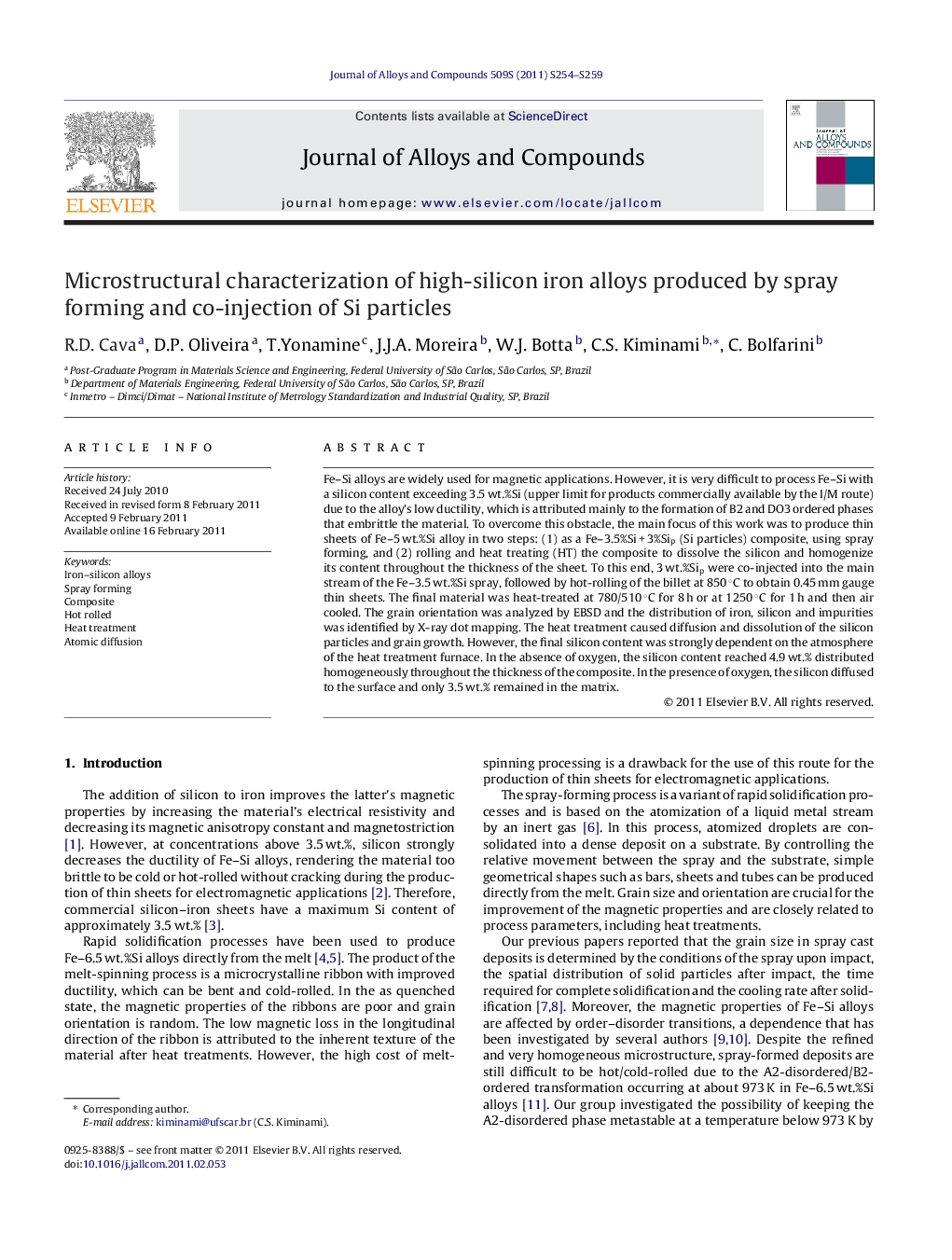| Article ID | Journal | Published Year | Pages | File Type |
|---|---|---|---|---|
| 1619504 | Journal of Alloys and Compounds | 2011 | 6 Pages |
Fe–Si alloys are widely used for magnetic applications. However, it is very difficult to process Fe–Si with a silicon content exceeding 3.5 wt.%Si (upper limit for products commercially available by the I/M route) due to the alloy's low ductility, which is attributed mainly to the formation of B2 and DO3 ordered phases that embrittle the material. To overcome this obstacle, the main focus of this work was to produce thin sheets of Fe–5 wt.%Si alloy in two steps: (1) as a Fe–3.5%Si + 3%Sip (Si particles) composite, using spray forming, and (2) rolling and heat treating (HT) the composite to dissolve the silicon and homogenize its content throughout the thickness of the sheet. To this end, 3 wt.%Sip were co-injected into the main stream of the Fe–3.5 wt.%Si spray, followed by hot-rolling of the billet at 850 °C to obtain 0.45 mm gauge thin sheets. The final material was heat-treated at 780/510 °C for 8 h or at 1250 °C for 1 h and then air cooled. The grain orientation was analyzed by EBSD and the distribution of iron, silicon and impurities was identified by X-ray dot mapping. The heat treatment caused diffusion and dissolution of the silicon particles and grain growth. However, the final silicon content was strongly dependent on the atmosphere of the heat treatment furnace. In the absence of oxygen, the silicon content reached 4.9 wt.% distributed homogeneously throughout the thickness of the composite. In the presence of oxygen, the silicon diffused to the surface and only 3.5 wt.% remained in the matrix.
